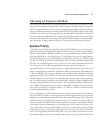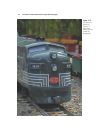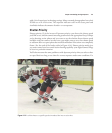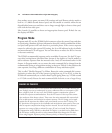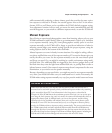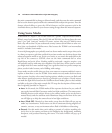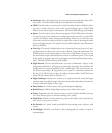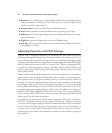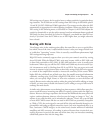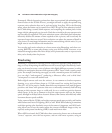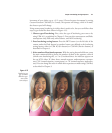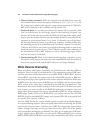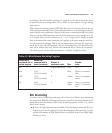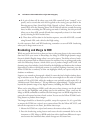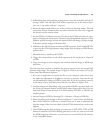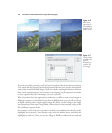ISO settings can, of course, also be used to boost or reduce sensitivity in particular shoot-
ing situations. The D7000 can use ISO settings from ISO 100 up to ISO 6400, plus H
1.0 and H 2.0 (ISO 12800 and 25600 equivalent). The camera can also adjust the ISO
automatically as appropriate for various lighting conditions. When you choose the Auto
ISO setting in the Shooting menu, as described in Chapter 8, the D7000 adjusts the
sensitivity dynamically to suit the subject matter, based on minimum shutter speed and
ISO limits you have prescribed. As I noted in Chapter 8, you should use Auto ISO cau-
tiously if you don’t want the D7000 to use an ISO higher than you might otherwise
have selected.
Dealing with Noise
Visual image noise is that random grainy effect that some like to use as a special effect,
but which, most of the time, is objectionable because it robs your image of detail even
as it adds that “interesting” texture. Noise is caused by two different phenomena: high
ISO settings and long exposures.
High ISO noise commonly appears when you raise your camera’s sensitivity setting
above ISO 400. With the Nikon D7000, noise may become visible at ISO 1600, and
is often fairly noticeable at ISO 3200. At ISO 6400 and above, noise is usually quite
bothersome. Nikon tips you off that ISO 12800 and 25600 may be tools used in spe-
cial circumstances only by labeling them H1.0 and H2.0. You can expect noise and
increase in contrast in any pictures taken at these lofty ratings. High ISO noise appears
as a result of the amplification needed to increase the sensitivity of the sensor. While
higher ISOs do pull details out of dark areas, they also amplify non-signal information
randomly, creating noise. You’ll find a High ISO NR choice in the Shooting menu,
where you can specify High, Norm, or Low noise reduction, or turn the feature off
entirely. Because noise reduction tends to soften the grainy look while robbing an image
of detail, you may want to disable the feature if you’re willing to accept a little noise in
exchange for more details.
A similar noisy phenomenon occurs during long time exposures, which allow more pho-
tons to reach the sensor, increasing your ability to capture a picture under low light con-
ditions. However, the longer exposures also increase the likelihood that some pixels will
register random phantom photons, often because the longer an imager is “hot,” the
warmer it gets, and that heat can be mistaken for photons. There’s also a special kind
of noise that CMOS sensors like the one used in the D7000 are potentially susceptible
to. With a CCD, the entire signal is conveyed off the chip and funneled through a sin-
gle amplifier and analog-to-digital conversion circuit. Any noise introduced there is, at
least, consistent. CMOS imagers, on the other hand, contain millions of individual
amplifiers and A/D converters, all working in unison. Because these circuits don’t nec-
essarily all process in precisely the same way all the time, they can introduce something
called fixed-pattern noise into the image data.
Chapter 4 ■ Getting the Right Exposure 119



